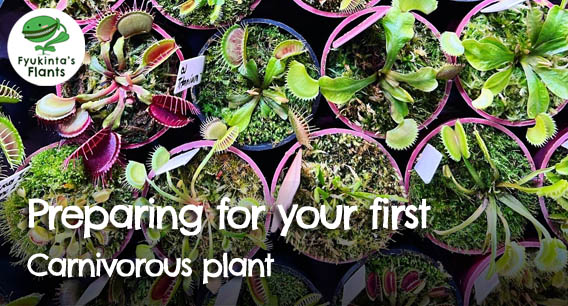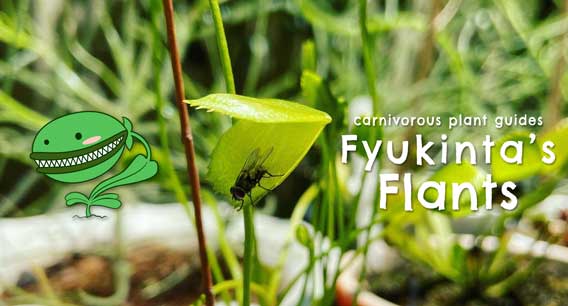ㅤ
Pitcher plants, and carnivorous plants in general, are known to need sunlight to photosynthesize and grow, along with the bugs they catch for food—until N. pudica literally came to light.
However, a newly discovered species of pitcher plant challenges that need by adapting so that it doesn’t need sunlight quite the same way. This is Nepenthes pudica, a tropical pitcher plant in Indonesia that grows traps underground!
N. pudica, the underground pitcher plant
This new species was first found in North Kalimantan, an Indonesian province on the island of Borneo. Most pitcher plants grow their traps from the tips of green, photosynthesizing leaves while suspended in midair. However, N. Pudica grows underground shoots with small, white leaves devoid of chlorophyll. Its reddish pitchers are also much larger than the leaves they grow from.
Detailed lower pitchers
Its scientific Pudica name also reflects its behavior. Pudica is derived from pudicus, the Latin adjective meaning bashful or shy. This refers to the fact that the plant’s lower pitchers stay hidden from sight. None of lower pitchers grow above ground.
According to the lead study author Martin Dančák of Palacký University Olomouc, Czech Republic, the species places pitchers that can grow up to 4.3 inches long underground, forming in cavities or directly in the soil to trap animals living underground. These are usually ants, mites and beetles.
Other groups of carnivorous plants can trap underground prey—namely Genlisea, Philcoxia and Utricularia. However, they only trap miniscule organisms, and they do so very differently. N. Pudica’s pitchers contained larger organisms such as mosquito larvae, nematodes and even a new worm species.
N. Pudica illustration
This carnivorous plant with pitfall traps is the only one known so far to have evolved to specifically function underground. The pitchers have even developed thicker walls that let them push soil away as they grow. They supposedly developed this way to adapt to their dry, high-altitude environment. There isn’t much water and insects often burrow into the ground for more stable conditions—like increased humidity.
How was N. Pudica discovered?
This is definitely a fantastic discovery, but it likely wouldn’t have come to light at all if it weren’t for a little luck. Scientists led by Martin Dančák certainly noticed that some plants on the mountain they’d been exploring very closely resembled pitcher plants. However, they didn’t find any pitchers.
Upper pitchers and excavated lower pitchers
Their initial search saw a deformed pitcher sticking out from the soil. They then concluded that the pitcher was buried by accident and the environment was just causing the lack of pitchers in general. As they ascended though, they found more plants that lacked pitchers. They started to think this particular species was evolving in a way that was making it lose its carnivorous properties (or its carnivory), which does happen in other carnivorous plants.
One scientist, Ľuboš Majeský of Palacký University Olomouc, accidentally revealed the actual answer. He tore off a piece of moss from the base of a tree while taking photos—exposing a whole bunch of deep maroon pitchers.
Excavated underground traps
An endangered species
The discovery of N. pudica is especially important for the conservation of nature in Borneo, which itself is a biodiversity hotspot. Wewin Tjiasmanto from the Indonesian conservation group Yayasan Konservasi Biota Lahan Basah in Surabaya, who also helped discover the new nepenthes species, says that they hope the discovery of this carnivorous plant helps protect Bornean rainforests.
It could prevent or at least slow the conversion of the forests into palm plantations for oil. The exact locations are withheld from the official research article in PhytoKeys to help avoid poaching by unscrupulous commercial collectors.
The researchers involved called for increased protection for the area as they keep investigating Borneo’s flora. They could discover more specialist carnivores given time—if the rainforests that supported them remained intact.
Who knows how many undiscovered carnivores are still there?
Are you ready to grow carnivorous plants?
If you have any questions, feel free to ask in a comment! If you know someone else who wants to try caring for carnivorous plants, send them this guide to make sure their first plant doesn’t die—or their next one, or their next one—
You can also message me on Facebook or Instagram. I post plant content every day about learnings, experiments, and just the regular progress of the plants in my collection.
Check out my other carnivorous plant guides
If you haven’t seen them yet, I have guides on how to prepare for your first carnivorous plant and how to grow other carnivorous plants like Venus flytraps and Byblis in the Philippines. You can check here for all my guides.
Carnivorous plant shop
You can also check what carnivorous plants and gardening items I have for sale in the links below!
I sell Venus flytraps, sundews, pitcher plants, and more carnivorous plants in my online shop, all grown in my own little garden in Marikina. I also have pots, Maxsea fertilizer, and even some non-carnivorous plants available. For grow lights, shelves, and even water trays I use, you can check my Shopee affiliate link collection.
I ship nationwide, and customers can enjoy free shipping and a loyalty card.









